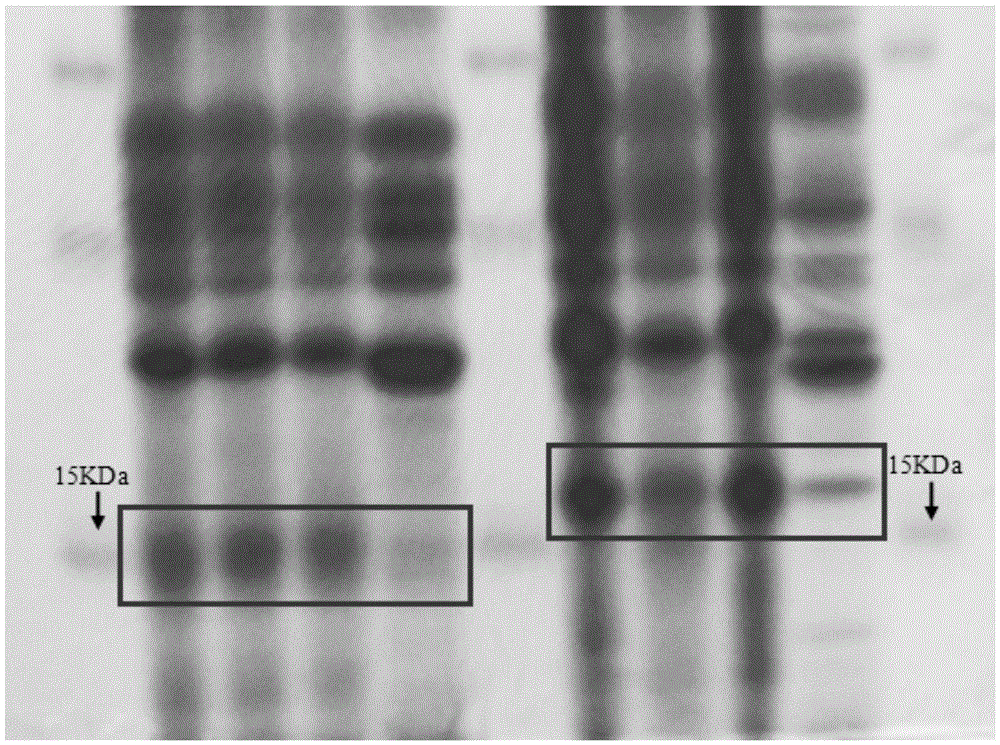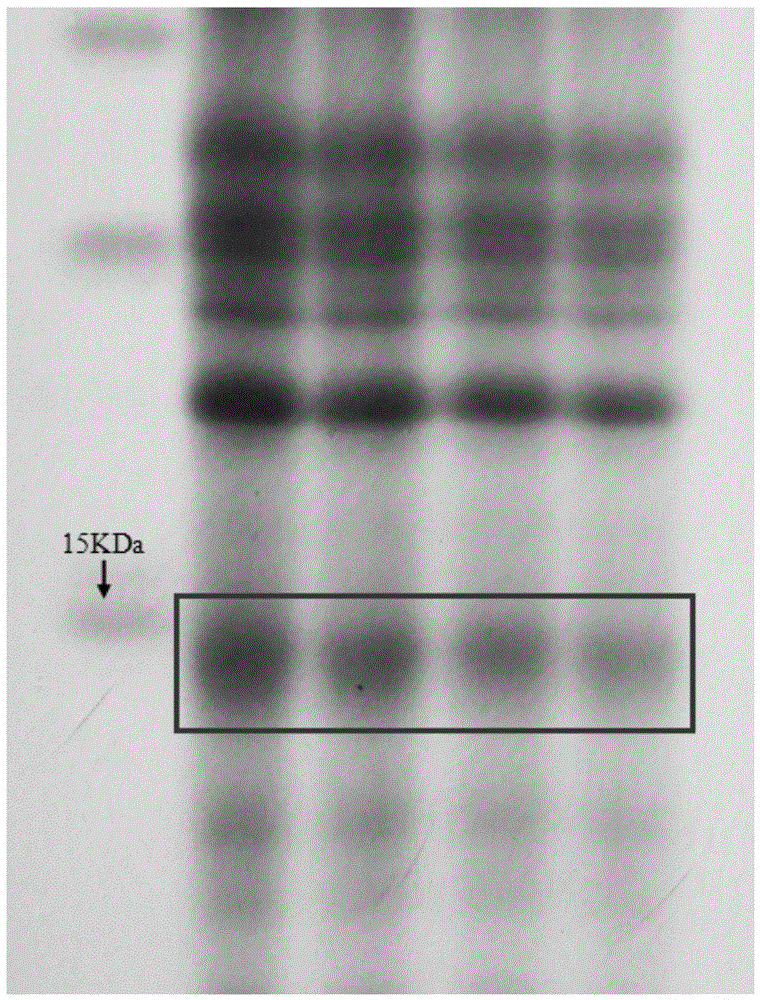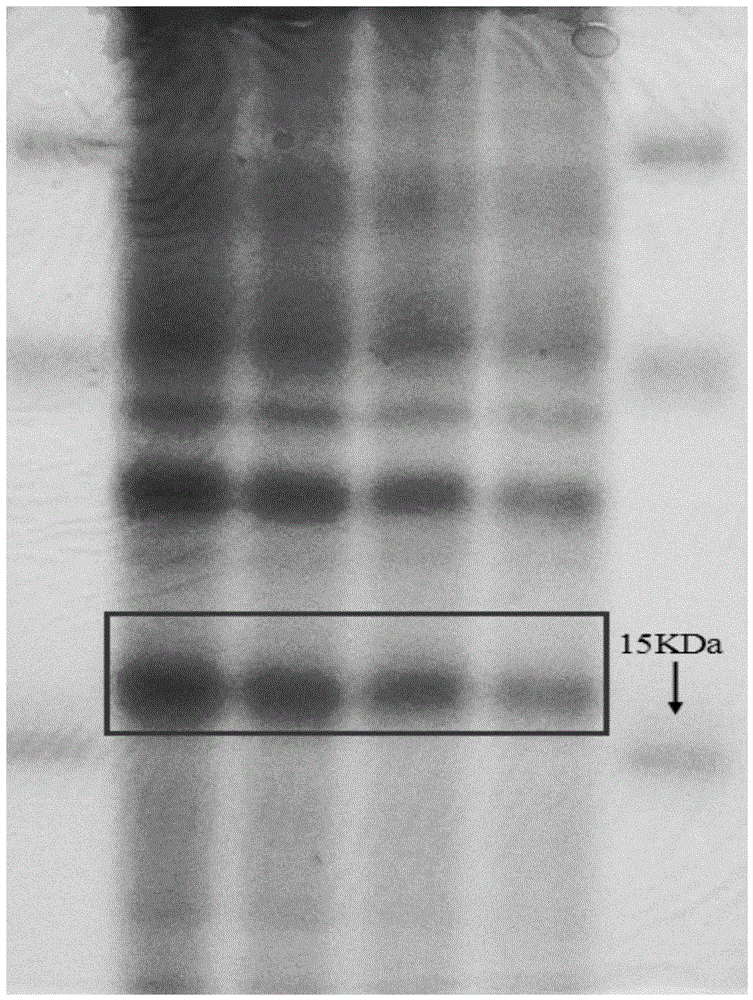Method for identifying apis cerana honey and apis mellifera honey
A technology of honey and honey bees, applied in the direction of measuring devices, material analysis by electromagnetic means, instruments, etc., can solve the problems of low yield, no production of propolis and royal jelly, low honey yield, etc., to achieve reasonable and simple design, accurate identification, Instrument common effects
- Summary
- Abstract
- Description
- Claims
- Application Information
AI Technical Summary
Problems solved by technology
Method used
Image
Examples
Embodiment 1
[0023] A method for discriminating Chinese bee honey and Italian bee honey is realized through the following steps:
[0024] (1) Extraction of total protein in honey: Weigh 10g of Zhongfeng honey and Italian bee honey respectively, put each in a 50ml centrifuge tube, add 10ml of sterile water, shake and mix well, and centrifuge at 8000g / min at 4°C Centrifuge for 10 minutes to remove impurities such as beeswax and pollen. Carefully draw the supernatant into a new 50ml centrifuge tube with a pipette gun. Pre-cool the supernatant in a 4°C refrigerator for 10 minutes, then add it to a -20°C freezer for pre-cooling 20ml of absolute ethanol, stirred gently in an ice-water bath for 15 minutes, then centrifuged at a speed of 15000g / min for 10 minutes at 4°C, discarded the supernatant, added 1.5ml of sterile water to the precipitate, stirred with a glass rod, and then Shake and mix well, then divide into 1.5ml centrifuge tubes and store in -80°C refrigerator for later use. Honey from d...
Embodiment 2
[0032] In order to ensure the experimental effect, the raw honey in this example comes from several cooperative bee farms in Jinhua City, Zhejiang Province, and the sample information is shown in Table 1 below. The royal jelly samples of Chinese bee royal jelly and Italian bee royal jelly in this example came from the experimental apiary of Zhejiang University, and the sampling time was September 23, 2015. The royal jelly samples were stored in a -80°C refrigerator for later use. Take an appropriate amount of royal jelly sample in a 1.5ml centrifuge tube, dilute to an appropriate concentration with deionized water, and the subsequent treatment is the same as that of the honey protein sample.
[0033] Table 1 Experimental honey sample information table
[0034]
[0035] Carry out experiment according to the method step of embodiment one, band result sees figure 1 .
[0036] from figure 1 It can be clearly seen that the protein samples of Chinese bee honey have their own s...
Embodiment 3
[0038] In this embodiment, the commercial honey of Chinese and Italian bee honey is selected as a sample, and the experiment is carried out according to the method steps of Example 1. The results of protein electrophoresis showed that the target band existed stably in commercial honey, and it could have a good identification effect during the shelf life of commercial honey, and had a good market effect.
[0039] The commercial honey in this example is provided by a certain company. Among them, the Italian bee honey is acacia honey, and the Chinese bee honey is miscellaneous flower honey. The shelf life is 18 months. The detection time is December 8, 2015. The following table 2, the band results are shown in figure 2 , image 3 .
[0040] Table 2 Production batch number information table of commercial honey
[0041]
[0042] from figure 2 , image 3 It can be seen that with the prolongation of the shelf life, the protein components in commercial honey will gradually deg...
PUM
 Login to View More
Login to View More Abstract
Description
Claims
Application Information
 Login to View More
Login to View More - R&D
- Intellectual Property
- Life Sciences
- Materials
- Tech Scout
- Unparalleled Data Quality
- Higher Quality Content
- 60% Fewer Hallucinations
Browse by: Latest US Patents, China's latest patents, Technical Efficacy Thesaurus, Application Domain, Technology Topic, Popular Technical Reports.
© 2025 PatSnap. All rights reserved.Legal|Privacy policy|Modern Slavery Act Transparency Statement|Sitemap|About US| Contact US: help@patsnap.com



